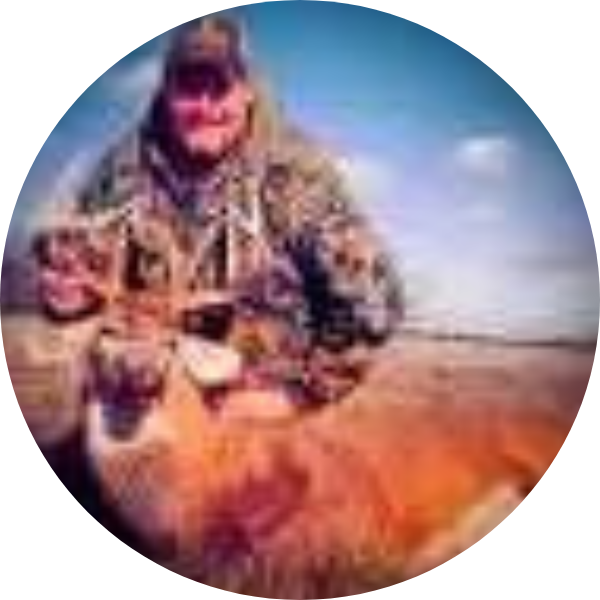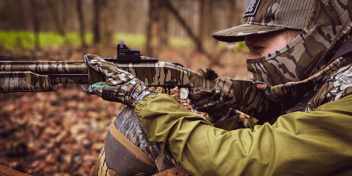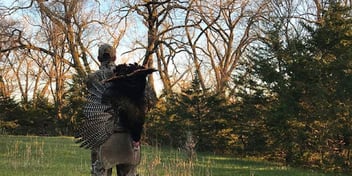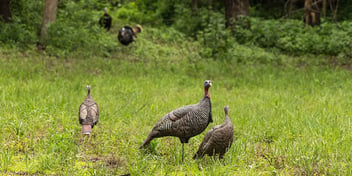Some Tips and Tactics For Spring Turkey Season Preparation
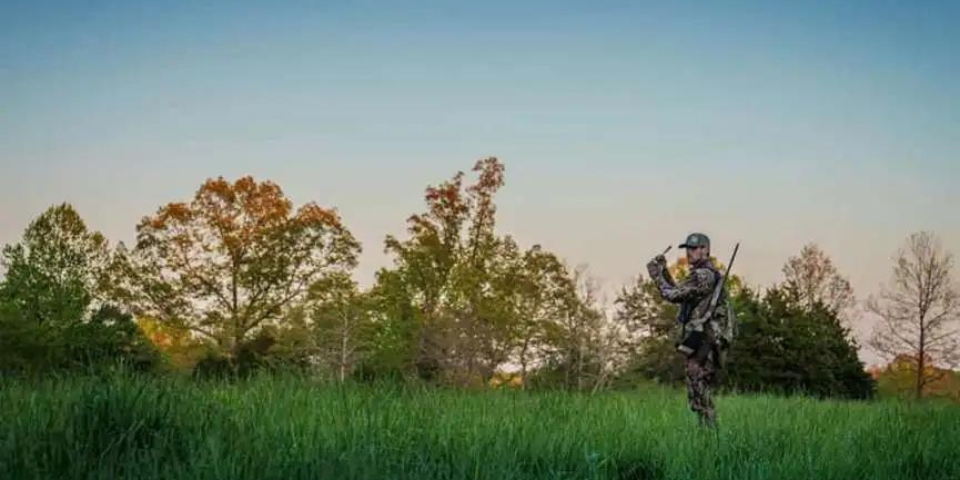
It’s the night before spring turkey season opens. The sun is just setting, and you’re sitting on the ridge of a field. You hit your owl call with a “who, who, whoooo.” You wait and listen.
There it is—the gobbler you were hoping to hear! You hit the call again, hoping to pinpoint his location, and you glass the trees along a creek. There he is, roosted in a big oak tree. Now you’ve got him roosted for the night, and hopefully, you’ll have a game plan for the morning.
Here are a few things I like to do before season opens to be best be prepared for that opening morning gobbler, and a few tactics I like to use to bag him.
The first thing I usually do around March is pull out my trusty Mossberg 500.
I know there are guns made just for turkey, but this gun has never let me down. I change my choke tube out to a xx full choke. Then I like to pattern my gun to about 40 yards.
I make sure my true glow gobble stopper red dot is hitting right where I want it to. I will shoot at 20 and 60 just to be safe, but 40 is about the farthest shot I like to take.
As far as my gun setup goes, it’s a good gun at around $500 for a combo, and the red dot is around $70. The red dot has red or green optics and a dot or crosshair. It takes a beating all spring and still is accurate. If you are in the market, I would consider it.


Practicing Calls
Starting around February, I’ll get out my calls and start to practice. I will look up wild turkey sounds on YouTube and try to recreate them with my calls.
They say, “Practice Makes Perfect.” I have several different box calls, slate calls, and mouth calls. The easiest for me to learn was the box call or a push-button call. My favorite calls are slate calls or mouth calls. I use the Woodhaven turkey Ninja mouth call the most.
Though it took a lot of practice to learn, it’s worth it. I like the fact that I can call hands-free when I have a turkey in range. I use box calls a lot when trying to blind call, too. I like to use a Flextone Si Series Jacked Up Turkey Call, too.
They are cheap and easy to learn. While on the topic of calls, it’s good to get a nice crow and owl locator call. They are perfect for roosting birds. At the end of March, I’ll get all my gear together. I make sure my camo is all ready to go.
I use Scent Lok Savanna Aero in the bottomland pattern. I have found it to be the perfect camo to layer up or down, and you can’t beat the pattern in the spring.
I also get my vest out and make sure it’s clean and get it organized for the upcoming season. I also get all my decoys out and dust them off. I touch up any paint spots that might need it and fix any brackets that might need repair.
I use Flexatone turkey decoys, too. They are priced right and are good-quality decoys. I also have an old turkey fan that I put in my pack.
There are a few different tactics I like to use when turkey hunting. I only have experience in Eastern, so that’s what my tactics are based on.


Roosting Ahead
The first and favorite tactic is to roost the birds the night before. I take a good pair of binoculars and my owl call and head out to my favorite spots. I usually start near a water source. I like to get as high up as I can to be able to scan 360 degrees around me. I hunt a lot of ag land with pockets of timber intermixed. I will hit the owl call a few times if I don’t see anything, and then listen. Turkey shock gobble at loud noises like the owl call, and it’s like they can’t resist it. I will wait about 10 minutes, then hit the call again.
If there is no response either time, I’ll move to my next spot. If I get a response, I’ll try to get close enough to see the birds without spooking them. Once roosted, I’ll start there first thing in the morning.
The next spot I like to look for is preferred food source areas, and I know these locations from scouting. If I still can’t get eyes on a gobbler before sunset, I usually look over my trail camera data to help me pick a location for the morning. Trail camera data can be just as good as roosting a bird if you can pattern the flocks of hens.
For my setups, if I have a bird roosted the night before, I like to get in a few hours before light. I will place a bedded hen with a Tom over top of her. I place this close to cover so I can conceal myself, but also be in his line of sight. I will hit the owl call to make sure he’s still close about 45 minutes before sunrise. Sometimes this step isn’t needed. Once one turkey gobbles, every one of them who is close by will do the same thing. There’s nothing like having four different Toms all gobbling before the sun comes up!
About 30 minutes before sunrise, just as light is coming up over horizon, I’ll start to let out a few hen yelps. I’ll continue this until the Tom pitches down. This is usually enough to get him to commit, and at first light, I’m ready. It doesn’t take long for them to pitch down after they can see. If he is close but won’t commit, I’ll fan him with my fan and hit a gobble call. This will usually seal the deal, but be ready, because they are fast.
If I have no roosted birds the night before, I like to set up where I think they will want to be. I will place a few hens with a Tom close by and call and listen. I will also place a lone hen out if I know a Tom is somewhat close by. If I don’t have any luck within the first couple of hours, I’ll move. I use a crow call to try to get a shock gobble. Sometimes, the gobbles will be very vocal, especially early in the season. As the turkey are pressured, they will vocalize a lot less after they pitch down.


Make Ready
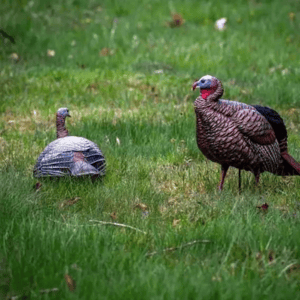 The key things to take away from this are to make sure your gun is on target and your gear is ready to go.
The key things to take away from this are to make sure your gun is on target and your gear is ready to go.
Make sure your calling effort is top-notch by getting in plenty of practice.
And make sure you do plenty of scouting.
Once you find and locate the birds, and if you are prepared, your effort should be easy. I mean, a turkey’s brain is the size of a pea after all.
I guess what I mean to convey is that—if it was only that easy!
Best of luck this season.
Originally featured in North American Outdoorsman.
About the Author
